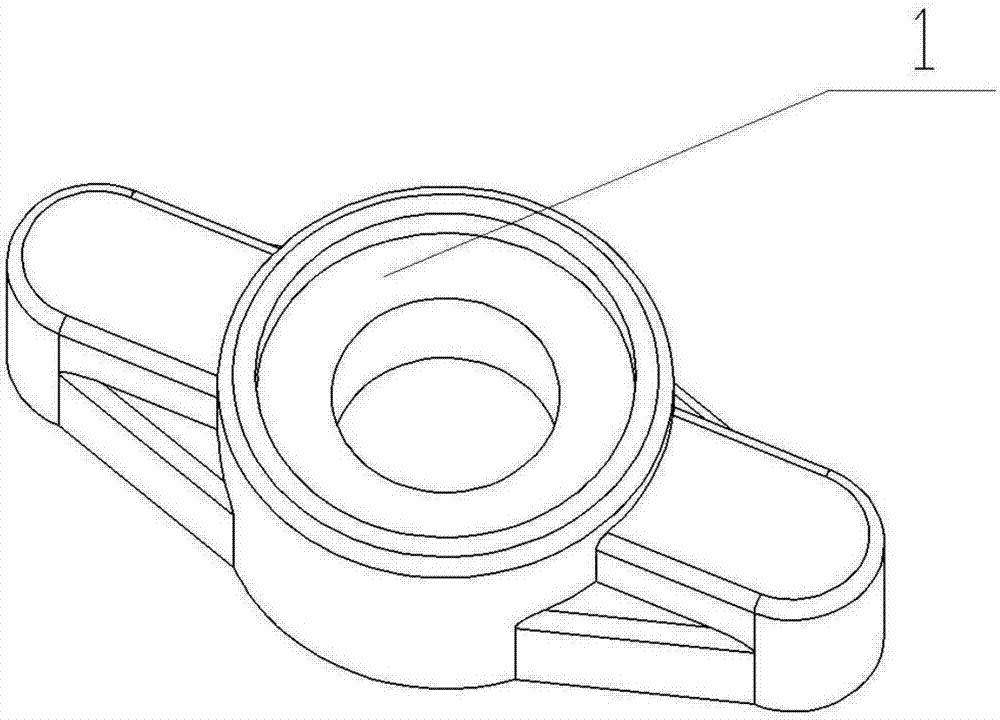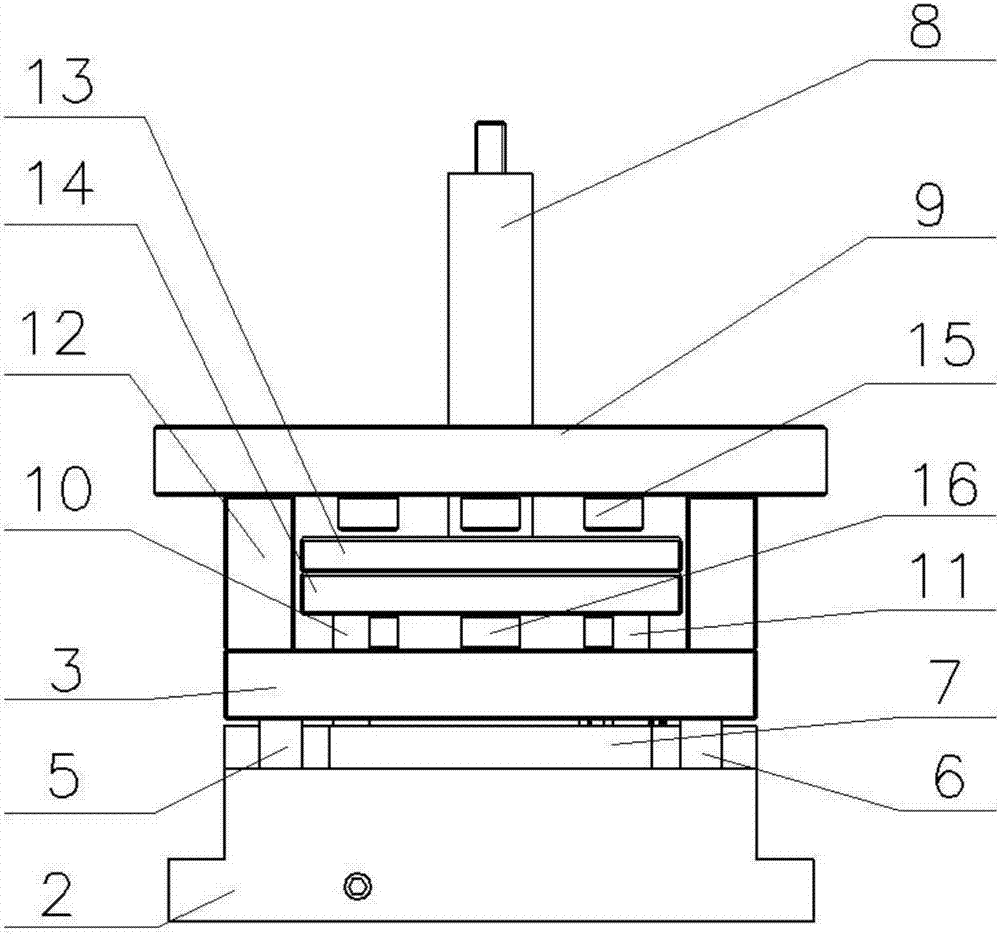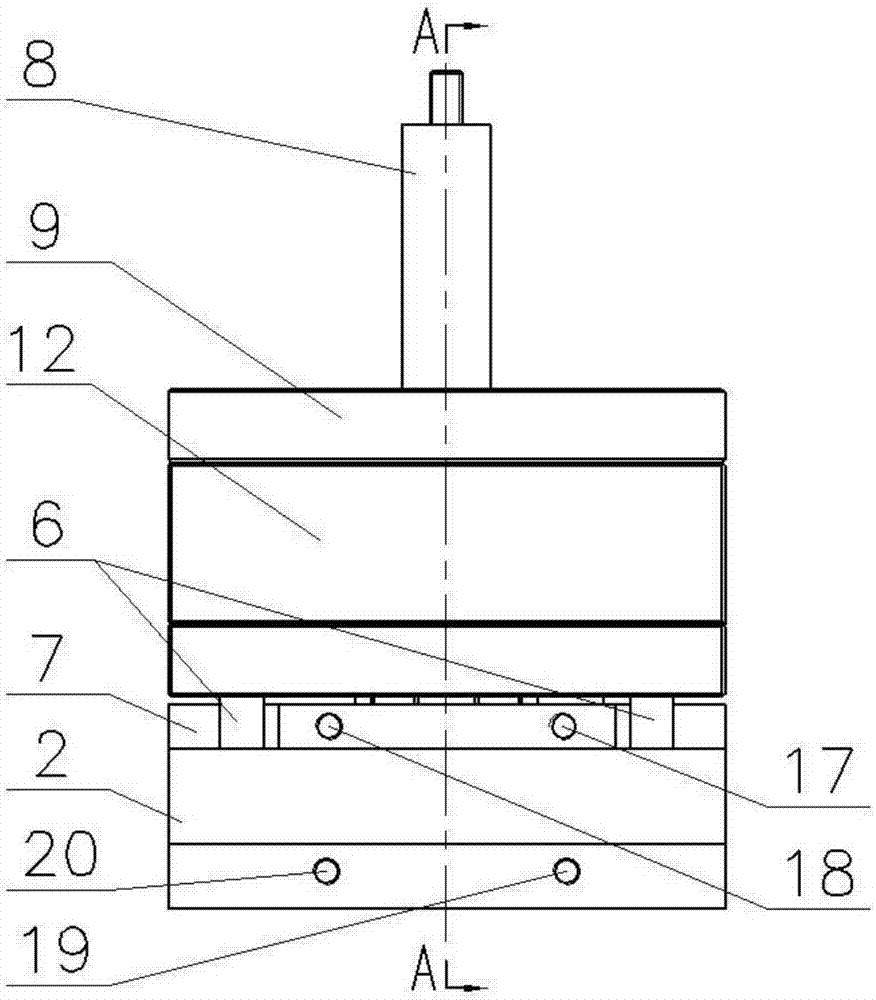Aluminum alloy semisolid secondary combined extrusion casting method
A compound extrusion and extrusion casting machine technology, which is applied in the field of aluminum alloy semi-solid forming, can solve problems such as easy shrinkage, difficult control of slurry quality, and complicated process
- Summary
- Abstract
- Description
- Claims
- Application Information
AI Technical Summary
Problems solved by technology
Method used
Image
Examples
Embodiment Construction
[0069] The present invention will be further described below in conjunction with accompanying drawing:
[0070] figure 1 As shown, it is a structural diagram of the molded part. The molded part 1 is in the shape of a circular shaft hole, and symmetrical steps are provided on both sides.
[0071] figure 2 , 3 , 4, 5, 6, 7, 8, and 9 are structural diagrams of the secondary composite extrusion casting mold, and the mold is composed of a fixed mold 2, a movable mold 3 and a secondary composite extrusion device;
[0072] The fixed mold 2 is connected with the movable mold 3 through the left guide post 5 and the right guide post 6;
[0073] The movable mold core 4 is fixedly installed on the movable mold 3, and the movable mold 3 is fixedly connected with the supporting mold base 12 and the movable mold back plate 9;
[0074] The secondary composite extrusion device is composed of push rod 8, upper push plate 13, lower push plate 14, upper limit block 15, lower limit block 16, ...
PUM
| Property | Measurement | Unit |
|---|---|---|
| Surface roughness | aaaaa | aaaaa |
| Tensile strength | aaaaa | aaaaa |
Abstract
Description
Claims
Application Information
 Login to View More
Login to View More - R&D
- Intellectual Property
- Life Sciences
- Materials
- Tech Scout
- Unparalleled Data Quality
- Higher Quality Content
- 60% Fewer Hallucinations
Browse by: Latest US Patents, China's latest patents, Technical Efficacy Thesaurus, Application Domain, Technology Topic, Popular Technical Reports.
© 2025 PatSnap. All rights reserved.Legal|Privacy policy|Modern Slavery Act Transparency Statement|Sitemap|About US| Contact US: help@patsnap.com



